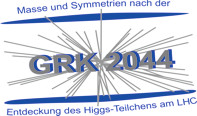Dark Matter Sensitivity of XENONnT
The XENONnT experiment, which is currently under commissioning at the Laboratori Nazionali del Gran Sasso (LNGS) in Italy, employs a time projection chamber (TPC) filled with 5.9t of liquid xenon (LXe) to search for dark matter WIMPs. A new study, co-authored by Diego Garcia Ramirez from Freiburg, uses detailed Monte Carlo simulations to assess all relevant backgrounds and the detector response to predict the instrument's sensitivity to WIMPs. The background estimate is based on results from screening all detector materials and components for their intrinsic radioactivity. Our group participated in this campaign with our low-background spectrometer GeMSE, installed in the Vue-des-Alpes tunnel in the Swiss Jura mountains.
XENONnT's sensitivity for spin-independent WIMP-nucleon elastic scattering cross sections, assuming the exposure goal of 20 txy, is 1.4x10-48 cm2 for a 50 GeV/c2 mass WIMP at 90% confidence level, more than an order of magnitude better than the current best limit from XENON1T.
The image shows the predicted background from electronic recoils (gray dots) together with the hypthetical signals from WIMPs of three different masses: light (red), medium (yellow) and heavy (green). Shown are simulated events in an ionization charge (cS2b: corrected charge signal in photoelectrons seen by the bottom PMTs) vs. scintillation light (cS1: corrected light signal seen by all PMTs) plane. Both signals can be used to reconstruct the recoil energy.
- Publication:
Projected WIMP Sensitivity of the XENONnT Dark Matter Experiment
E. Aprile et al. (XENON)
arXiv:2007.08796





